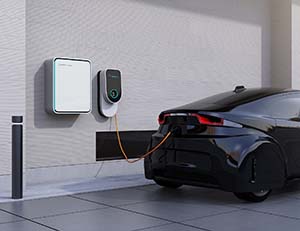Diodes for various applications
The diode, as a basic electronic component, has unidirectional conductivity, that is, it allows the current to pass in only one direction and conducts little electricity in the other direction. This characteristic makes diodes have a wide range of applications in life. Below, I will specify the application of diodes through a few examples in life:
1. Light Emitting Diode (LED)
Examples: LED flashlights, LED light bulbs, mobile phone screen backlights, traffic lights, car taillights, etc.
Light-emitting diodes (leds) are one of the most common diode applications. Compared with traditional incandescent lamps, leds have higher energy efficiency, longer service life and lower heat generation. The light emitted by LED has good monochrome and bright colors, and is widely used in lighting, display and indication.
2. Rectifier diode
Example: Power adapter, charger internal circuit.
Description: In the process of converting alternating current to direct current, the rectifier diode plays a key role. It only allows the positive or negative half of the alternating current to pass through, thus realizing the rectification of the alternating current and powering a variety of electronic devices that require direct current. Power adapters and chargers usually contain a rectifier circuit inside to ensure that the output current is stable direct current.
3. Voltage regulator diode
Example: Voltage regulator circuits in electronic devices, such as around power management chips.
Voltage regulator diode is a diode with a stable voltage effect, which can maintain a certain voltage value in the circuit, so as to protect other components from the influence of voltage fluctuations. In the power management circuit of electronic equipment, voltage regulator diodes are often used to ensure that the equipment can obtain a stable voltage supply under different working conditions.
4. Protect the diode
Example: Input/output interfaces for devices such as televisions, computers, etc.
Protection diodes are usually used in the input/output ports of a circuit to prevent excessive external voltage or reverse voltage from causing damage to the circuit. When the external voltage exceeds a certain value, the protection diode will be switched on, introducing excess current into the ground wire, thereby protecting other components in the circuit from damage.
5. Photodiode
Examples: light sensors, light switches, cameras, etc.
Description: A photodiode is a diode that can convert an optical signal into an electrical signal. In light-sensitive sensors and light-controlled switches, photodiodes can sense changes in light and convert them into electrical signals, which in turn control the circuit on and off. In the camera, the photodiode is used to convert the captured light signal into an electrical signal for subsequent image processing and transmission.
In summary, diodes have a wide range of applications in life, from basic rectification, voltage regulation, protection to advanced luminescence, photoelectric conversion and other fields have an important role.



